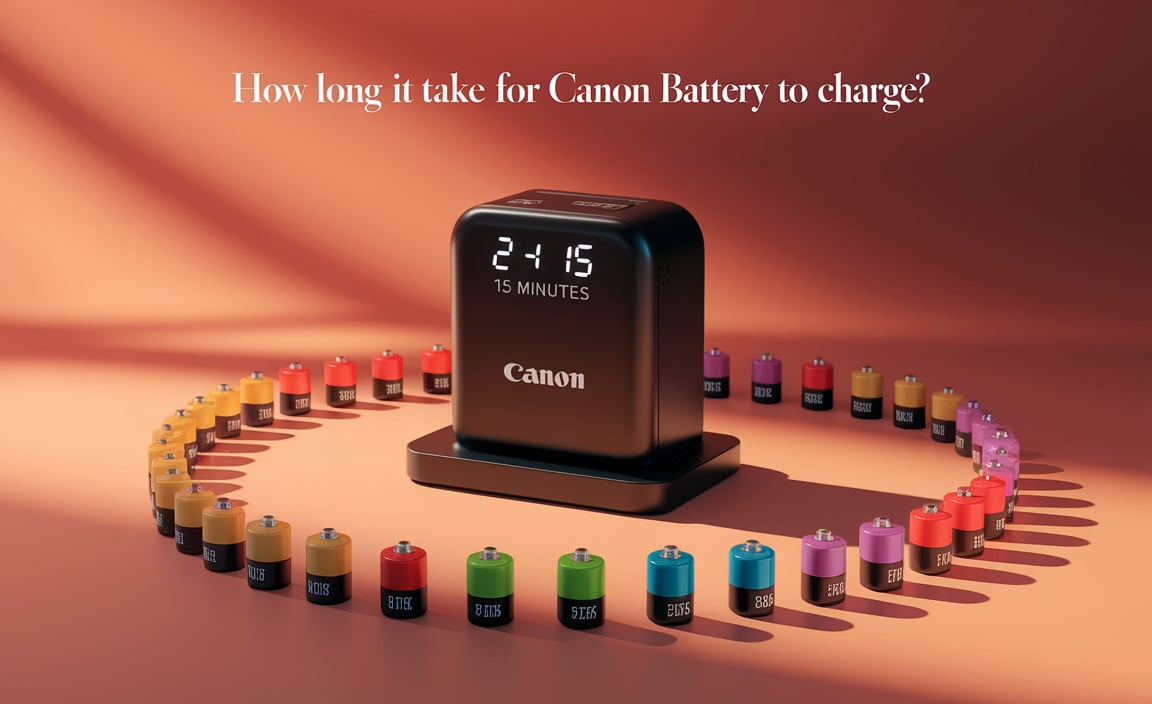Quick Summary
Choosing the right 12v car battery for electric cars is crucial for accessory power. While EVs primarily use a large traction battery, a standard 12v battery is still essential for lights, infotainment, and safety systems. Compare types like AGM and EFB based on your car’s needs. Ensure proper fitment and voltage for seamless operation.
Buying a car should be exciting, but when a warning light pops up on your dashboard, it can bring a dose of worry. If your car’s electric accessories are acting up, or if you’re getting ready to replace a fading battery, you might be wondering about that 12-volt battery in your electric car. It’s a common question! Even though electric cars use a big battery to drive the wheels, they still need a smaller 12-volt battery to power everything else. Think of it like your phone having a main battery and a small backup. This guide will walk you through exactly what you need to know to pick the best 12v car battery for your electric ride.
Understanding the 12v Battery in Your Electric Car
It might seem a bit confusing at first: electric cars run on electricity, so why do they need a 12-volt battery? The big, high-voltage battery pack is what powers your car’s motor and allows it to drive. However, that powerful pack is separate from the systems we use every day when the car isn’t “driving” in the traditional sense. The 12-volt battery is similar to the battery found in a gasoline-powered car. It acts as the power source for all the “normal” car features that make driving comfortable and safe.
These essential accessories include:
- Exterior and interior lights
- Power for the infotainment system (radio, navigation, screens)
- Windows and door locks
- Wipers
- The car’s computer systems and sensors
- The car’s DC-DC converter, which actually charges the 12v battery from the main high-voltage traction battery.
Without a healthy 12v battery, these systems won’t work, and the car might not even be able to “start” (or, more accurately, be ready to drive). So, while it’s not the battery that gets you moving down the road, it’s definitely a critical component for overall vehicle function.
Why Comparing 12v Car Batteries Matters for Electric Cars
Even though electric cars are designed with advanced technology, they aren’t immune to battery degradation. Over time, any 12v battery can lose its ability to hold a charge effectively. When it’s time for a replacement, simply grabbing any battery won’t do. Comparing 12v car batteries for electric cars ensures you get a suitable replacement that meets your vehicle’s specific requirements.
Here’s why making an informed choice is important:
- Accessory Power Reliability: A good 12v battery ensures all your car’s accessories work when you need them, from headlights on a dark road to your GPS navigating through a new city.
- System Compatibility: Different batteries have different power output and charging characteristics. Using the wrong type can put a strain on your car’s charging system or not provide enough power for sensitive electronics.
- Safety Features: Many safety systems, like airbags and anti-lock brakes (ABS), draw power from the 12v system. A weak battery could compromise their effectiveness.
- Longevity: Choosing the right battery type and one with good quality construction can lead to a longer lifespan, saving you money in the long run.
- Preventing Issues: A failing 12v battery can sometimes cause strange electrical gremlins in an EV, which can be confusing to diagnose. A proper replacement often resolves these.
Types of 12v Batteries for Electric Cars
While the core function is the same, there are a few main types of 12-volt batteries commonly used in vehicles. Most modern electric cars will specify which type is recommended, but understanding the differences is helpful.
Flooded Lead-Acid (FLA) Batteries
These are the most traditional type of car battery. They contain lead plates immersed in a liquid electrolyte solution. They are generally the most affordable option.
- Pros: Lower cost, widely available.
- Cons: Can be less durable, prone to vibration damage, require periodic maintenance (topping up water levels), can release gases, and are sensitive to deep discharges.
Enhanced Flooded Batteries (EFB)
EFB batteries are a step up from standard flooded batteries. They are designed for vehicles with basic start-stop technology or higher energy demands. They have a slightly more robust construction and can handle more charge/discharge cycles than traditional FLA batteries.
- Pros: Better performance than standard FLA, can handle more frequent starts (though less critical in EVs), good for basic start-stop systems.
- Cons: Not as robust as AGM for very high demands or deep cycling.
Absorbent Glass Mat (AGM) Batteries
AGM batteries are a more advanced technology. Instead of liquid electrolyte, they use a fiberglass mat that absorbs the electrolyte. This makes them spill-proof and more resistant to vibrations. They are often found in higher-end vehicles and those with more complex electrical systems or regenerative braking.
- Pros: Excellent vibration resistance, spill-proof, can handle deep discharges better, offer higher power output, and generally have a longer lifespan. They are also maintenance-free.
- Cons: More expensive than FLA or EFB batteries.
Which is best for EVs? Many electric vehicles, especially those with advanced power management systems and regenerative braking, often recommend or come standard with AGM batteries. This is because AGM batteries can better handle the fluctuating power demands and the higher number of charge/discharge cycles associated with EV operation. Always check your car manufacturer’s recommendation.
Comparing Key Specifications When Buying a 12v Car Battery
When you’re looking to compare 12v car batteries, you’ll see a few numbers and terms on the label. Understanding these will help you make the right choice.
1. Voltage (V)
This is straightforward. Almost all standard passenger car 12v batteries operate at 12 volts. Electric cars use this standard voltage for their auxiliary systems.
2. Cold Cranking Amps (CCA)
CCA measures a battery’s ability to start an engine in cold temperatures. While you aren’t “cranking” an internal combustion engine in an EV, the CCA rating still indicates the battery’s power delivery capability. A higher CCA generally means a stronger, more capable battery. Electric cars might have different CCA requirements than gasoline cars, so check your manual.
3. Reserve Capacity (RC)
Reserve Capacity indicates how long a fully charged battery can deliver 25 amps at 80°F (27°C) before its voltage drops below usable levels. A higher RC means the battery can power your car’s accessories for a longer time if the charging system has an issue, or if you’re running many accessories with the car “off” but powered on.
4. Ampere-Hour (Ah)
Ampere-Hour (sometimes listed as BC or Cranking Amps) is a measure of the battery’s energy storage capacity. It tells you how many amps the battery can deliver for a specific number of hours. A higher Ah rating means more total energy storage.
5. Size and Terminal Type (Group Size)
Batteries come in various physical sizes to fit different battery trays. Using the wrong size can lead to installation problems or the battery not being secured properly. Terminal configuration (e.g., top post, side post, and their location like positive left or right) is also crucial for connecting the cables correctly. Your car manual or an auto parts store lookup tool will tell you the correct “group size” for your vehicle.
Example Comparison Table:
| Feature | Flooded Lead-Acid (FLA) | Enhanced Flooded Battery (EFB) | Absorbent Glass Mat (AGM) |
|---|---|---|---|
| Electrolyte Type | Liquid | Liquid (with additives) | Absorbed in Fiberglass Mats |
| Maintenance | Requires topping up | Low maintenance | Maintenance-free |
| Vibration Resistance | Lower | Moderate | High |
| Spill-Proof | No | No (but less prone to leaks than FLA) | Yes |
| Deep Discharge Tolerance | Poor | Moderate | Good |
| Cycle Life | Lower | Moderate | Higher |
| Cost | Lowest | Medium | Highest |
| Typical EV Use Case | Older/Base models, less common | Some start/stop systems, basic needs | Most modern EVs, high-demand systems, regenerative braking |
How to Choose the Right 12v Battery for Your Electric Car
Picking the correct battery is less about “comparing 12v car battery for electric cars” in a competitive sense and more about finding the right fit for your specific electric vehicle. Here’s a practical approach:
1. Consult Your Owner’s Manual
This is your absolute best resource. Your car manufacturer knows your vehicle best. The manual will specify the exact type of battery (AGM is common for EVs), the required group size, and often the minimum CCA or RC rating needed. It’s the most reliable way to ensure compatibility.
2. Check the Existing Battery
If your current 12v battery is working fine and you suspect it’s nearing the end of its life, you can often find the specifications printed directly on the battery itself. Look for the group size, brand, and any specific ratings. This can be a good starting point, but always double-check against your manual.
3. Use Online Fitment Guides
Most reputable auto parts stores have online tools where you can enter your car’s make, model, and year. These guides will then show you compatible battery options. While useful, always cross-reference this information with your owner’s manual if possible.
4. Consider Your Car’s Electrical Needs
Modern EVs often have sophisticated electronics. If your car has a premium sound system, advanced driver-assistance features, or extensive in-car tech, opting for a higher-quality AGM battery with a good Reserve Capacity is often a wise choice, even if a basic FLA might technically fit. It ensures your systems have consistent, reliable power.
5. Look for Quality Brands and Warranties
When comparing specific models, brands like Odyssey, Optima, Bosch, Duracell (car batteries), and ACDelco are known for producing reliable batteries. Pay attention to the warranty period. A longer warranty (e.g., 2-3 years or more) often indicates a manufacturer’s confidence in their product’s durability.
6. Don’t Overlook Battery Health and Age
Even a new battery can be “old” if it has sat on a shelf for too long without proper charging. When buying, check if there’s a manufacturing date sticker on the battery. Batteries are best used within six months of their manufacture date. Many reputable retailers will have a system to ensure you get a fresher battery.
Safety First: Handling Your 12v Car Battery
Batteries, even the 12v ones, contain corrosive acid and can produce flammable gases. It’s important to handle them with care. These safety tips are crucial whether you’re removing an old battery, installing a new one, or just working under the hood of your electric car.
Essential Safety Gear:
- Safety Glasses: Protect your eyes from splashes or fumes.
- Gloves: Battery acid is corrosive. Rubber or nitrile gloves will protect your skin.
- Work Clothes: Wear old clothes you don’t mind getting dirty, as battery acid can stain.
Handling Precautions:
- Work in a Well-Ventilated Area: Batteries can release hydrogen gas, which is flammable. Avoid sparks or open flames nearby.
- Keep Metal Objects Away: Never let tools or jewelry touch both battery terminals at the same time. This can cause a short circuit, sparks, and potentially a battery explosion.
- Disconnecting and Connecting Order: Always disconnect the negative (-) terminal first, then the positive (+). When reconnecting, attach the positive (+) terminal first, then the negative (-). This minimizes the risk of sparks.
- Avoid Smoking or Open Flames: As mentioned, battery gases are flammable.
- Handle with Care: Batteries are heavy. When removing or installing, lift with your legs, not your back.
- Inspect for Damage: Before installation, check the new battery for cracks or leaks.
Replacing the 12v Battery: A Step-by-Step Guide
Replacing a 12v car battery in an electric car is very similar to doing it in a gasoline car. The primary difference is where the battery is located, which varies by EV model. Always refer to your owner’s manual for your specific vehicle’s procedure.
Tools You Might Need:
- New 12v battery (correct group size and type)
- Wrench set or socket set (usually 10mm or 13mm for terminals and hold-down clamp)
- Terminal cleaner or wire brush
- Anti-corrosion spray or grease
- Safety glasses and gloves
Step-by-Step Replacement Process:
- Locate the Battery: This can be in the front trunk (frunk), under a seat, or in the engine bay (less common in EVs). Your manual is key here. Make sure the car is “off” and power is off at the main breaker if your EV has one accessible.
- Access the Battery: You might need to remove a plastic cover or other components to get to the battery.
- Disconnect the Negative Terminal: Using the correct wrench, loosen the nut on the negative (-) terminal clamp and pull the cable off the terminal. Tuck it aside so it can’t accidentally touch the terminal.
- Disconnect the Positive Terminal: Now, loosen the nut on the positive (+) terminal clamp and remove the cable. Again, tuck it away safely.
- Remove the Battery Hold-Down Clamp: Batteries are secured by a clamp or bracket. Remove the bolts holding this clamp in place.
- Remove the Old Battery: Carefully lift the old battery out of the tray. It can be heavy, so use proper lifting techniques.
- Clean the Battery Tray and Terminals: Use a wire brush or terminal cleaner to remove any corrosion from the battery tray and your vehicle’s cable connectors.
- Install the New Battery: Place the new battery into the tray, ensuring it sits correctly and is oriented the same way as the old one.
- Reinstall the Hold-Down Clamp: Secure the new battery with the hold-down clamp. Make sure it’s snug and holds the battery firmly.
- Connect the Positive Terminal: Place the positive (+) cable clamp onto the positive terminal and tighten the nut.
- Connect the Negative Terminal: Place the negative (-) cable clamp onto the negative terminal and tighten the nut.
- Apply Anti-Corrosion Treatment: A light spray of anti-corrosion protection on the terminals can help prevent future issues.
- Replace Covers and Reassemble: Put back any panels or covers you removed.
- Test: Close the hood/frunk, get in the car, and ensure all systems power up correctly. Check for any warning lights.
Important Note on EVs: Some electric vehicles may require a specific procedure to “wake up” or reset the car’s systems after the 12v battery has been disconnected. This often involves leaving the car powered off for a period or following a specific sequence. Again, your owner’s manual is the definitive guide for your model.
For more detailed guidance on battery maintenance and safety, the U.S. Department of Energy provides excellent resources, including information on battery technologies and safe handling practices: You can explore resources on battery management systems from the Department of Energy’s Vehicle Technologies Office.
Troubleshooting Common 12v Battery Issues in EVs
Even with a properly chosen and installed battery, you might encounter issues. Here are a few common symptoms and what they might mean:
- Car won’t “start” or power on: This is the most common sign of a dead or weak 12v battery. The car’s main systems can’t be activated.





